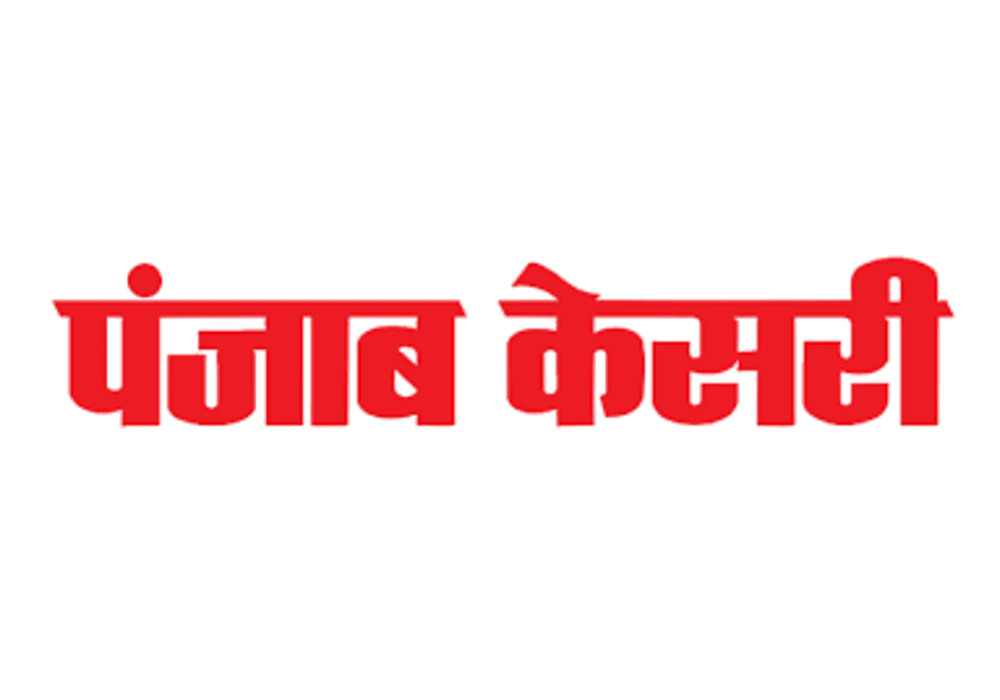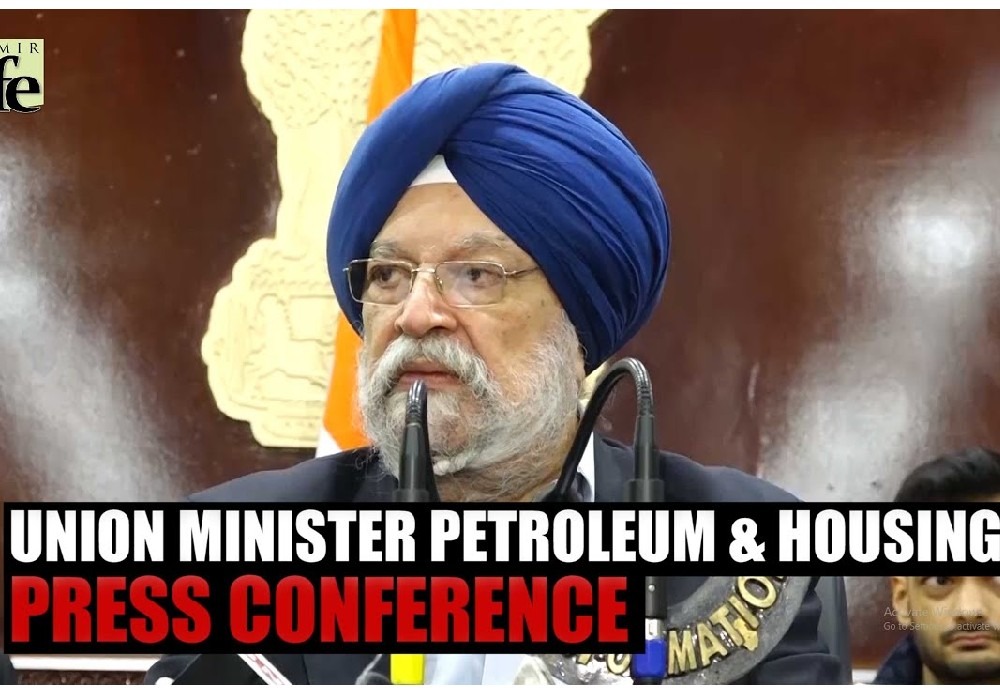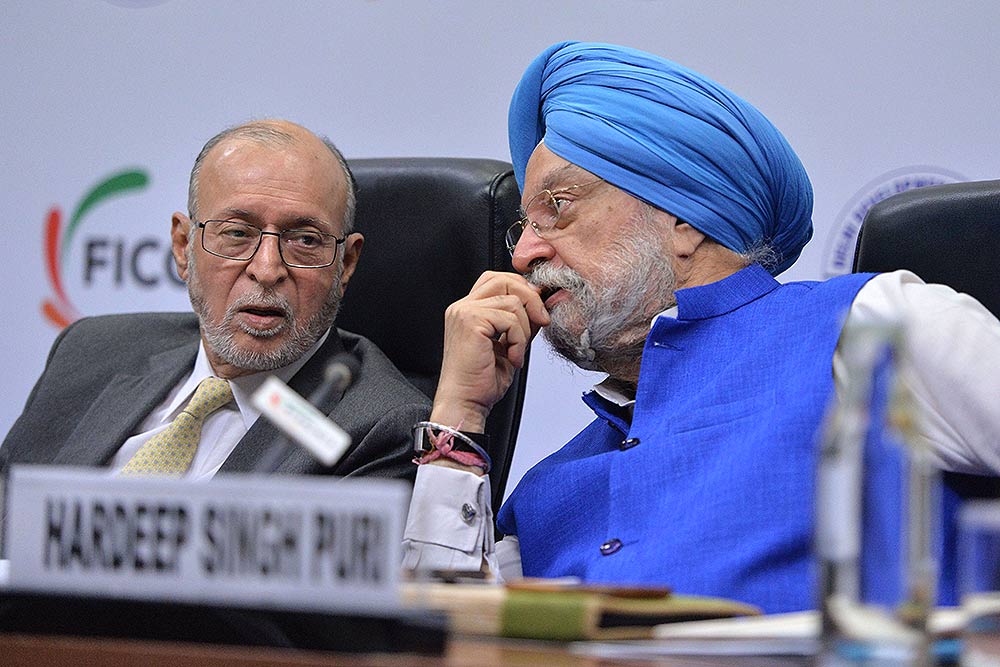India-US Relations at the Cross-road?
Monday, 10 March 2014
India International Centre
Mr. Chairman,
Distinguished Panelists,
Ladies & Gentlemen,
Mr. Chairman, many years ago, on 28 January 2009 to be precise Ambassador Rajan Abhyankar hosted a lunch for Ambassador Karl Inderfurth then on a visit to India. The discussion turned to US policy on Afghanistan. I recall your prescience. You turned to the visitor and enquired: “who does your thinking on Afghanistan”.
One might be tempted to pose that query in the context of US foreign policy in general and certainly in relation to the bilateral relationship with India.
The fact that our bilateral relationship with the United States is important is a given. The US is the world’s largest economy. At around US$ 15 trillion, its economy is twice the size of China. The fact that it is a democracy makes it all the more special. Apart from a shared value system, anchored in democracy, we now have what has been described as a strategic partnership, a concept or a process, whose contours I never fully comprehended during 39 long years as a practicing diplomat. We have so many strategic partnerships, some clearly of dubious value and very little standing. Our strategic partnership with the United States should be a defining feature of our foreign policy. But is it?
There is no shortage of lofty public pronouncements. President Obama said in 2010 that the India-US relationship was one of the defining partnerships of the 21st century”. He reiterated in November 2012 that “India is a big part of my plans”. On our part, Prime Minister, Dr. Singh told President Bush, “People of India deeply love you”!
The combined trade in goods and services for the year 2013-14 is expected to cross US$ 100 billion. In the last 9 years, we have purchased defence equipment and platforms from the United States valued at nearly US$ 10 billion.
A sovereign does not tax another sovereign. And yet, we got relief not because of the philosophical convergence of views but because we put reciprocal measures on the table.
A sovereign also is required to respect and uphold the dignity of the representative of another sovereign. A sovereign does not strip search the representative of the other sovereign. In this context, I must respond to Ambassador Man Singh who was one of my favourite bosses. This was not just a wage dispute. A wage dispute between an employer and employee can be resolved. This was a case brought by the US Government against a serving Indian diplomat.
I suspect we will get to a level-playing field only after we insist on full reciprocity. Courtesies, privileges and issues of immunity will need to be addressed in a focussed manner.
I propose to briefly take up what the United States has been doing to us in two areas of importance in our multilateral interaction.
Since 2012, the US started mounting pressure on a range of Indian policies, claiming that India was protecting its own industries through various measures intended to “localize” manufacture of electronic goods, telecom products, steel, drugs and pharma and other such products in India. In particular, the US has been claiming that India does not protect intellectual property rights for pharma products. The grant of one compulsory license in 2012 and the Supreme Court’s decision in 2013 to reject the patent application of a German drug company, was cited as proof that the Indian environment for patent protection is hostile. Based on pressure from a few large US firms (Pfizer, Abbot, IBM) the US Congress has mandated an investigation by the US International Trade Commission (USITC) of India’s economic and investment policies, and an assessment of whether these policies were causing damage to US industrial interests. The first public hearing of this investigation was on February 13, 2014; the report is due in the end of November 2014.
As regards compulsory licensing, at least eight Western European countries have provisions for grant of compulsory licences in the ‘public interest’. So do many Asian and Latin American countries. The Indian law is, therefore, neither unusual nor should be a cause of concern. So far only two applications for compulsory licences have been made since 2005. The first was for Bayer’s Nexavar, which has resulted in the grant of a compulsory licence. The second was for Bristol-Myers Squibb’s Sprycel, which was rejected.
The US is a signatory to the TRIPs Agreement and Doha Declaration. If the US pharmaceutical industry is not satisfied with the standards adopted by India, it should take it up with its own government, not subject India to its tirade. Clearly, India is TRIPs compliant. The effort appears to be to seek TRIPs plus from us.
There are some others also like the Boeing Company and the US-India Business Council (USIBC) representing wide and varied segments of the US business and industry. It is pertinent to take note of their submissions. Boeing in its submission to the ITC said:
“Indian IPR laws applicable to the range of Boeing’s business activities in India are comparable to IPR regulations in other developed countries, as India is a signatory to all major conventions and treaties on this subject. Additionally, in our experience, there have not been any major patent violations in India pertaining to Boeing’s defense/aerospace products. Boeing sells its products to the Government of India (GoI) and private airlines where our IPR is contractually protected; we see minimal risk of product IPR violations by the GoI and private airlines.
On the R&D side, Boeing has established major research partnerships with several partners in India, including with academia such as IITs and IISc, government labs such as National Aerospace Laboratories and National Metallurgical Laboratories, and industry. Our experience has been that all Indian partners have consistently honoured these contractual agreements, including NDAs, Intellectual Property protection and other related conditions.”
Apart from this glowing tribute to our IPR protection by Boeing, it would be instructive to look at the following:
Market audit by AWACS shows that sales of five US pharmaceutical companies grew by 79% in a four-year period (2009-13). They are Abbott Healthcare (57%), Abbott India (104%), Pfizer (105%), Merck (74%) and BMS (59%).
Data for seven foreign companies (Abbott, Bayer, GSK, Merck, Novartis, Pfizer and Sanofi) shows rise in imports of finished products by 425% in a seven-year period (2005-12) from R1.9 billion to R8 billion.
Dividend remittances of seven foreign companies listed above reported growth of 281% in a seven-year period (2005-12) from R6.5 billion to R18.5 billion.
It is, therefore, obvious that the business environment has not hindered growth of their sales or profits or repatriation of income.
Also, Local content requirements provided under the Buy America Act are extensively used by the United States in the development of infrastructure, among others. The Federal Highway Administration’s Buy America policies require a domestic manufacturing process for all steel or iron products that are permanently incorporated in a Federal-aid highway construction project.
I would now like to move from the arena of multilateral economic and trade relations to the hardcore world of the UN Security Council and briefly touch on issues relating to the use of force and the right to intervene.
Let me first mention India’s aspiration to be a permanent member of the UN Security Council. In November, 2010 In New Delhi, Obama said “The just and sustainable international order that America seeks includes a United Nations that is efficient, effective, credible and legitimate, That is why I can say today – in the years ahead, I look forward to a reformed U.N. Security Council that includes India as a permanent member.”
The bureaucracy thereafter left no stone unturned to pour cold water on this. The US delegation in New York made common cause with the Russians and the Chinese who are most opposed to India’s elevation.
Let me turn now to the Use of Force and the Right to Intervene. First, the case of Bangladesh. I recommend to anyone who has interest in this subject to read The Blood Telegram’ by the American academic Gary Bass. Archer Kent Blood was the US Consul General in Dhaka in 1971. He and his colleagues were eye witnesses to the genocide that the Pakistani army was unleashing on the poor people of the erstwhile East Pakistan. Members of his staff documented individual cases of targeting and killing of people, those opposed to the regime and Hindus. Washington’s attention was, however, affixed elsewhere. When Smt. Indira Gandhi drew the attention of London and Washington to the genocide and the millions of refugees that India was receiving from East Pakistan, this did not resonate. When Archer Blood and twenty of his colleagues in the Consulate wrote the famous ‘blood telegram’ Kissinger and Nixon chose to ignore it. The bloodshed and massacre that followed have been documented. The United States chose to ignore the human tragedy because Pakistan, the perpetrator facilitated contact between the United States and China for Nixon’s visit.
In Rwanda again, there was clear evidence in April 1994 that massacres were going to take place on a large scale. For some reason the Clinton administration chose not to take notice. 800,000 people were mercilessly butchered.
Contrast that to what happened in Libya. Saudi Arabia and Qatar armed the opposition. Over-enthusiasm for the Arab Spring led to the expectation that its outcome would resonate on a western liberal democratic template. A Security Council Resolution and military action by NATO was made the basis for regime change. The democratic aspirations of the people of Libya will, however, take time to materialize if at all they are ever allowed to. The mistakes made in Libya have impacted on the deteriorating situation in Syria where the United States has sought to blame the Russians and the Iranians.
Fast forward this situation to Ukraine and Russians action in the Crimea. A role reversal? Can we invoke the same doctrine?
It would be useful to engage the United States and other interlocutors on the doctrine of the use of force and the Right of Intervention.
What kind of sovereignty do we and the United States, or for that matter the rest of the world, believe in? If we believe in absolute sovereignty then it stands to reason that every dictator with genocidal intent can do as he or she pleases within their own territorial limits. Surely, that cannot the case.
We must be consistent. One cannot turn a blind eye to genocide in what is now Bangladesh and Rwanda but sanction the use of force in Libya where the action was based only on imminence of threat. As democracies, we cannot but subscribe to the doctrine of responsible sovereignty. But responsible sovereignty is different from responsibility to protect or R2P.
We have no difficulty with the first two pillars of the doctrine of R2P, Responsibility to Protect. The first pillar: It is every government’s responsibility to protect its citizens from the four mass atrocities, genocide, ethnic cleansing, war crimes and crimes against humanity. Equally, we subscribe to pillar two: That in case the institutions of a state are inherently fragile, or if a State is failing or on the verge of failing, it is the duty of the international community to come to the assistance of that State. Our problems arise with pillar three. When and why should the International Community intervene. Clearly, pillars one and two should first be exhausted. The problem arises because the use of force and the right to intervene is so nakedly political in content.
The least that we can do is not to lecture each other on high principle.
Thank you.

Synopsis Union Minister Hardeep Singh Puri stated India's commitment to an inclusive global energy future through open collaboration, highlighting the India-Middle ..

देश में एक करोड़ यात्री प्रतिदिन कर रहे हैं मेट्रो की सवारी: पुरी ..

Union Minister for Petroleum and Natural Gas and Housing and Urban Affairs, Hardeep Singh Puri addressing a press conference in ..

Joint Press Conference by Shri Hardeep Singh Puri & Dr Sudhanshu Trivedi at BJP HQ| LIVE | ISM MEDIA ..
(3).jpg)
"I wish a speedy recovery to former Prime Minister Dr Manmohan Singh Ji. God grant him good health," Puri wrote. ..